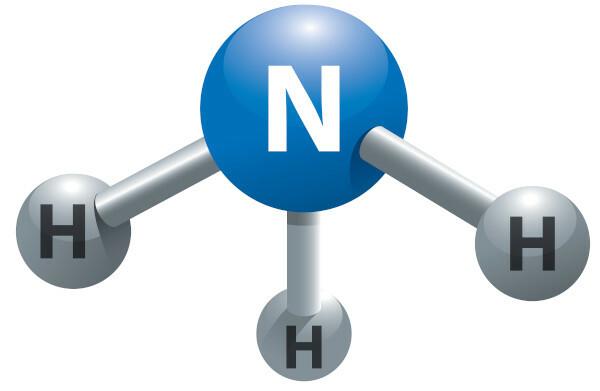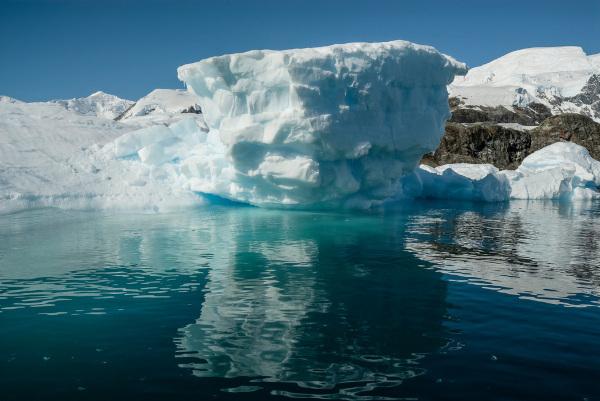O rin Paraguay It is one of the most important watercourses in the South America. It originates in the state of Mato Grosso, starting its trajectory in the northeast-southwest direction, which runs through Mato Grosso do Sul and crosses the Brazilian border towards the neighboring territories of Bolivia, Paraguay and Argentina, where it flows into the river Paraná.
Paraguay is a very important river for transporting cargo and people and also for supplying the local population, which includes traditional peoples. Its waters also feed the fauna and flora of the Pantanal and other ecosystems that have developed in the region.
Read too: Amazon River — body of water that forms the largest watershed in the world
Topics of this article
- 1 - Summary about the Paraguay River
- 2 - General data of the Paraguay River
- 3 - Where is the Paraguay River?
- 4 - Characteristics of the Paraguay River
- 5 - Source of the Paraguay River
- 6 - Tributaries of the Paraguay River
- 7 - Mouth of the Paraguay River
- 8 - Upper Paraguay River Basin
- 9 - Importance of the Paraguay River
- 10 - Preservation of the Paraguay River
- 11 - Curiosities about the Paraguay River
Overview on the Paraguay River
Rio Paraguai is a watercourse located in southern South America.
Born in the Brazilian state of Mato Grosso and lard, in addition to Brazil, three other neighboring countries: Bolivia, Paraguay and Argentina.
It flows into the Paraná River, in Argentine territory.
It is 2,695 km long.
Among its main tributaries are the Cuiabá, São Lourenço and Paraná rivers.
It traverses predominantly flat terrain and, therefore, presents many meanders. This can hamper navigation in some stretches.
Your hydrographic basin comprises the Pantanal, a biome that depends on the drainage network of the Paraguay River. This hydrographic region helps supply the Plantina Basin.
The Paraguay River is important because it supplies and transports both people and cargo. Provides water and moisture to the ecosystems of the region, in addition to being a source of income and sustenance for many traditional populations of the Pantanal.
General data of the Paraguay River
Length of the Paraguay River: 2,695 km.
Source of the Paraguay River: Upper Paraguay (Mato Grosso).
Main tributaries of the Paraguay River: Paraná, Cuiabá, São Lourenço, Apa, Negro, Cabaçal, Sepotuba, Jauru.
Mouth of the Paraguay River: Argentina.
Where does the Paraguay river flow: Paraná River, in Isla de Cerrito (Argentina).
Average flow: 2,700 m³/s.
basin area: 1,000,000 km².
Where is the Paraguay River?
The Paraguay River is in the subcontinent of South America. This watercourse originates in the region Midwest of Brazil, more precisely in the state of Mato Grosso, and follows its path bathing the territory of three other countries:
Bolivia;
Paraguay;
Argentina.
The waters of the Paraguay River, in short stretches, act as a natural border between the Bolivian and Brazilian territories, considering that it runs through a small part of the extreme east of Bolivia. The largest extensions of this watercourse are located in the Brazil and in Paraguay.
Do not stop now... There's more after the publicity ;)
Characteristics of the Paraguay River
The Paraguay River is one of the main rivers in South America. It runs northwest-southwest and has an extension of 2,695 km between its source and its mouth, covering the predominantly flat terrain that forms the Pantanal plain of Mato Grosso between the Brazilian states of Mato Grosso thick and Mato Grosso do Sul. There is a small area on its path composed of plateaus It is depressions where the main gaps in its course are identified.
To the waters of rio Paraguay follow a winding path with low declivity in function of relief flat, which favors the formation of meanders and makes this watercourse navigable in most of its extension, although it presents low displacement speed. Thus, this river is widely used for the movement of people and goods, being an important transport route in the Pantanal region.
Excessive curves pose problems for navigation on the section that goes from the city of Cáceres, in Mato Grosso, to Corumbá, in Mato Grosso do Sul, where there are also some river islands, that is, which form in rivers, and areas with excess sediment.
The Paraguay River is inserted in three important biomes, two of which are Brazilian:
thick;
Pantanal;
Chaco, which corresponds to the extent of the Pantanal in Paraguay and Bolivia.

It is about a intermittent river, whose waters do not dry out in a certain period of the year. However, due to the climatic characteristics of the areas through which it flows and mainly its source, which correspond to those of the tropical weather, the Paraguay River has a lower flow during the driest months of the year.
In addition, the Paraguay River is the main watercourse of the Hydrographic Region of Paraguay, one of the 12 big watersheds into which the Brazilian territory is divided. Its area is 362,380 km², equivalent to approximately 60% of the area of the Upper Paraguay Basin.
Read too:Tocantins River — the main river in the Tocantins-Araguaia basin
Source of the Paraguay River
The Paraguay River born in a swampy region in the north of the state of Mato Grosso, in the municipality of Alto Paraguai. It is an area of plateau terrain characterized by the presence of Chapada dos Parecis, where the first section of this watercourse known as Das Nascentes, which extends to the region of the city of Barra do Bugres.|1| The sources of the Paraguay River are located in a altitude approximately 300 meters above sea level.
Tributaries of the Paraguay River
The drainage network that has the Paraguay River as its main watercourse is formed by its various tributary or tributary rivers. See which are the main tributaries of the Paraguay River below:
São Lourenço river;
Cuiabá River;
Apa river;
river Cabaçal;
river Jauru;
Sepotuba River;
Paraguay-Mirim River;
Taquari River;
Parana River.
Mouth of the Paraguay River
The mouth of the Paraguay River is localized in the territory of Argentina, in the region of the city of Isla del Cerrito. This watercourse flows into the Paraná River, that is, it has no direct outlet to the Oatlantic ocean.
Upper Paraguay River Basin
The Upper Paraguay River Basin (BAP) is the drainage region formed by the rio Paraguay and its tributaries, comprising areas in three of the four countries bathed by this watercourse, namely: Brazil, Bolivia and Paraguay. This hydrographic system has a total area of 600,000 km² and comprises three important brazilian biomes, which are the Pantanal, the Cerrado and the amazon, present in the northern portion of the BAP.
This basin is divided into two regions, as described by the Pantanal Observatory:
Highland, which corresponds to the higher altitude terrains and where the sources of the Paraguay River and other water courses inserted in this basin are located, most of them tributaries of the main river. Its area is 217 km².
Pantanal or Pantanal Plain, which corresponds to terrains of lower altitude and flat features, some of them swampy and where the waters of the Paraguay River overflow during the flood period. Its area is 160 km².
Importance of the Paraguay River

The Paraguay River bathes one of the areas of greatest biodiversity from the country, what is the Pantanal. Its waters, which also include the tributary rivers, are responsible for supplying this system, providing the necessary humidity for the maintenance of animal and plant life. In addition, when the Paraguay River floods in the rainy months, a large flooded plain forms, a very characteristic landscape of the Mato Grosso Pantanal.
The Alto Paraguai Basin, which has the Paraguay River as its main river, is also important in the context of regional waters, bearing in mind that its more than 170 rivers are responsible for feeding from the Platinum Basin.|2|
Some of the main cities in the Midwest and also in South American countries, such as the Paraguayan capital, Asunción, are located on the banks or close to the Paraguay River. In that way, he serves both the direct supply of municipalities and as a means of transport. In Brazil, according to the National Department of Transport Infrastructure (Dnit), the Paraguay Waterway serves urban centers such as cuiabá, Poconé, both in MT, Corumbá and Aquidauana, in MS, and plays an important role in the regional economy.
The Paraguay River is important also for the traditional peoples of the Pantanal, such as fishermen, riverside dwellers and indigenous populations, who often depend on the waters of this river for their sustenance and subsistence.
Read too:Amazon Basin — the largest river basin in the world
Preservation of the Paraguay River
Given the importance of the Paraguay River, the preservation of its waters becomes fundamental for the maintenance of the watercourse itself and the ecosystems that depend on it, some of which are today very degraded and with a high degree of fragility, such as the Pantanal. Recently, in 2021, a hydrographic mapping of the Paraguay Basin was carried out with the purpose of identifying points of degradation in all the rivers of that region so that appropriate measures are taken for their recovery.
The sources of the Paraguay River and its respective hydrographic region are already considered environmental protection areas (APA). The APA das Nascentes do Paraguai, as it is called, covers an area of over 77,000 hectares and is under the jurisdiction of the Legal Amazon. Its creation took place in the year 2006.
Facts about the Paraguay River
It is the eighth longest watercourse in South America.
The stretch of the Paraguay River that runs through Brazilian territory is almost 1,700 km long.
Its name comes from the Guarani language and means “a big river”.
It has a capacity of up to 24,000 tons of cargo for waterway transport in its North Section, between Corumbá and Cáceres. Thus, it becomes important in the displacement of raw materials such as iron ore and manganese.
A waterway of the Paraguay river serves an area with a population of almost 1.2 million inhabitants.
Grades
|1| G1 MT. Paraguay River is the 8th largest in South America and runs through 4 countries. G1, 04 Jun. 2019. Available here.
|2| RABELO, Angelo Paccelli Cipriano; SOUZA, Marcel. (Eds.) Upper Paraguay Basin: a journey through time. Brasília, DF: IBICT, 2021. 140p. Available here.
image credits
[1]Julian Peters Photography / Shutterstock
By Paloma Guitarrara
Geography Teacher
Check out the main natural aspects of the Brazilian Midwest, with information on climate, vegetation, relief and hydrography.
Get to know the characteristics of the Platina Basin and find out which basins it is formed by. Also understand the importance of this basin for the region where it occurs.
Learn more about Brazilian river basins. Understand their importance to nature and society in general.
Learn more about the Pantanal. Understand the fauna and flora of this biome. Find out about the environmental impacts caused in the Pantanal.
Learn more about the largest floodplain on the planet.



